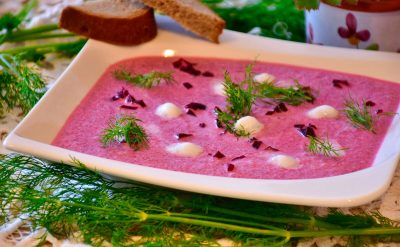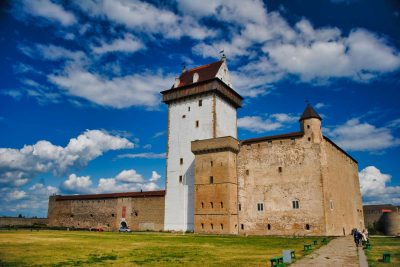Lithuania, the southernmost of the three Baltic countries, is one of the smaller countries in Europe. Nevertheless, there is a lot to discover here! In this article, we want to take you to the far north of Europe and present our personal top 20 sights in Lithuania!
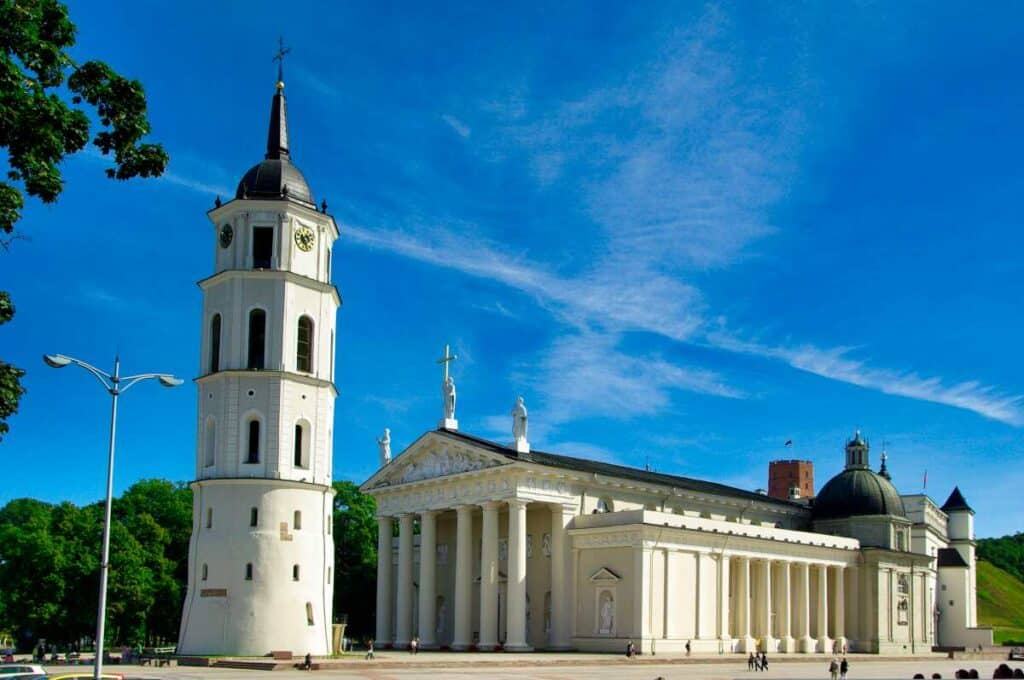
Old Town of Vilnius
We start in the old town of Vilnius, also known as “Senamiestis”. The Old Town of Vilnius is characterized by its well-preserved architecture from different eras. It stretches over an extensive area and offers an impressive panorama of Gothic churches, Baroque palaces and neoclassical-style buildings. The narrow cobblestone streets and squares are lined with cozy cafés, art galleries and souvenir stores that preserve the flair of the past. Many consider Vilnius’ Old Town to be the most beautiful in the Baltic States. No wonder that UNESCO declared it a World Heritage Site as a whole in 1994.
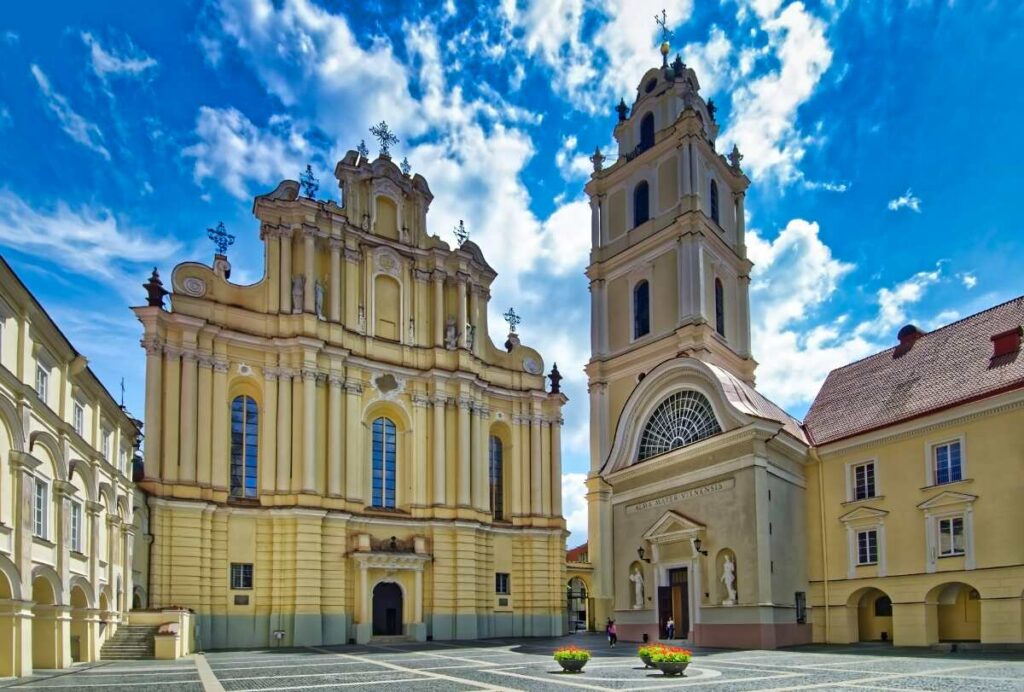
Highlights include the Gediminas Tower perched high on a hill, the Grand Ducal Palace and the famous Gate of Dawn, which attracts worshippers from all over the world. One of the outstanding landmarks of the old town is St. Stanislaus Cathedral, an impressive baroque church with a rich history. Places of worship play a major role in the Old Town. Catholic cathedrals, Orthodox churches and synagogues reflect the city’s rich cultural past.
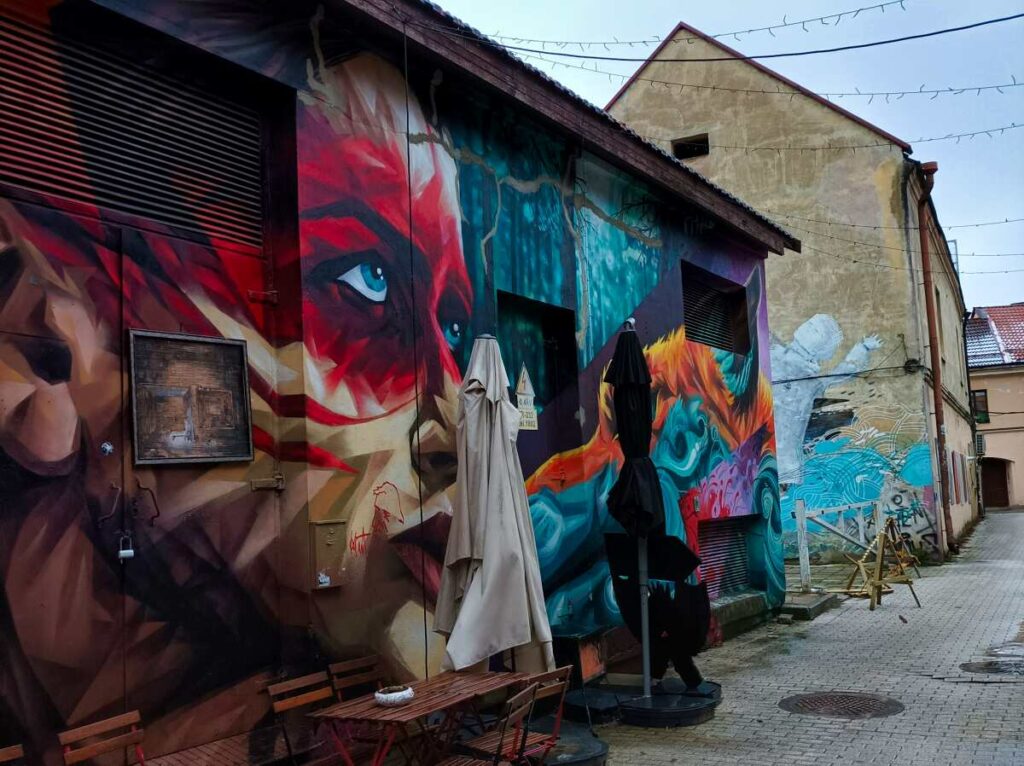
Užupis
In the heart of Vilnius’ historic Old Town lies a unique and charming neighborhood known as Užupis. Užupis is much more than just a district, it is an alternative neighborhood that is affectionately referred to by its residents as the “Republic of Užupis”. The district was declared an independent entity in the 1990s and has its own constitution, flag and anthem. This symbolic act reflects the creative and independent spirit of the inhabitants of Užupis. There are numerous art galleries, studios and art installations adorning the streets and squares. It is a place where artists, writers, musicians and free thinkers of all kinds come together to live out and share their creativity.
Museum of occupations and freedom fights
Formerly known as the Museum of the Victims of Genocide or the KGB Museum this museum west of Vilnius’ Old Town, is not for the faint-hearted. It was founded with the aim of reappraising and documenting the events and developments during the Soviet and German occupation and the subsequent struggles for freedom in Lithuania. The oppressive exhibition is housed in a building that was used by both the Gestapo and the KGB as a torture chamber and interrogation facility.
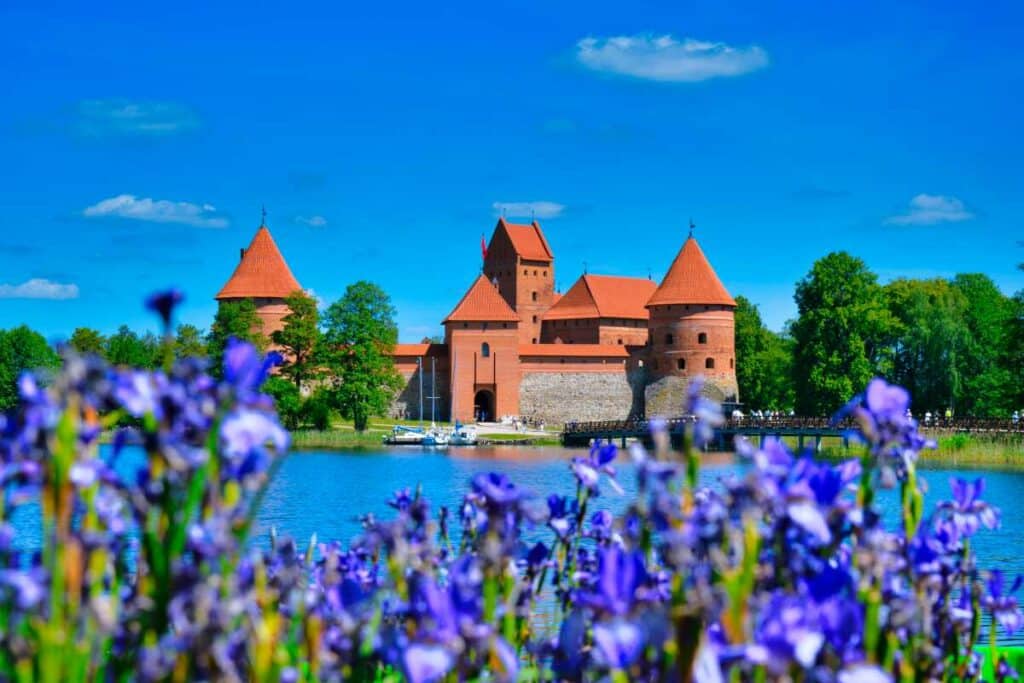
Trakai
No Lithuanian postcard would be complete without Trakai, one of the country’s most picturesque places. Trakai is the only moated castle in Eastern Europe and this beautiful place is perfect for a day trip from Vilnius. Picturesquely nestled in a lake landscape, the town was the capital of the Grand Duchy of Lithuania for several years in the 14th century.
The magnificent castle complex, which you can visit today, was also built in that century. Various exhibitions provide information about the history of Lithuania and the castle itself in particular. Trakai is also interesting because many Karaites and Tatars live here. They have preserved their own culture and in the many restaurants by the lake you can try delicious Karaite dishes that you won’t find anywhere else in the country.
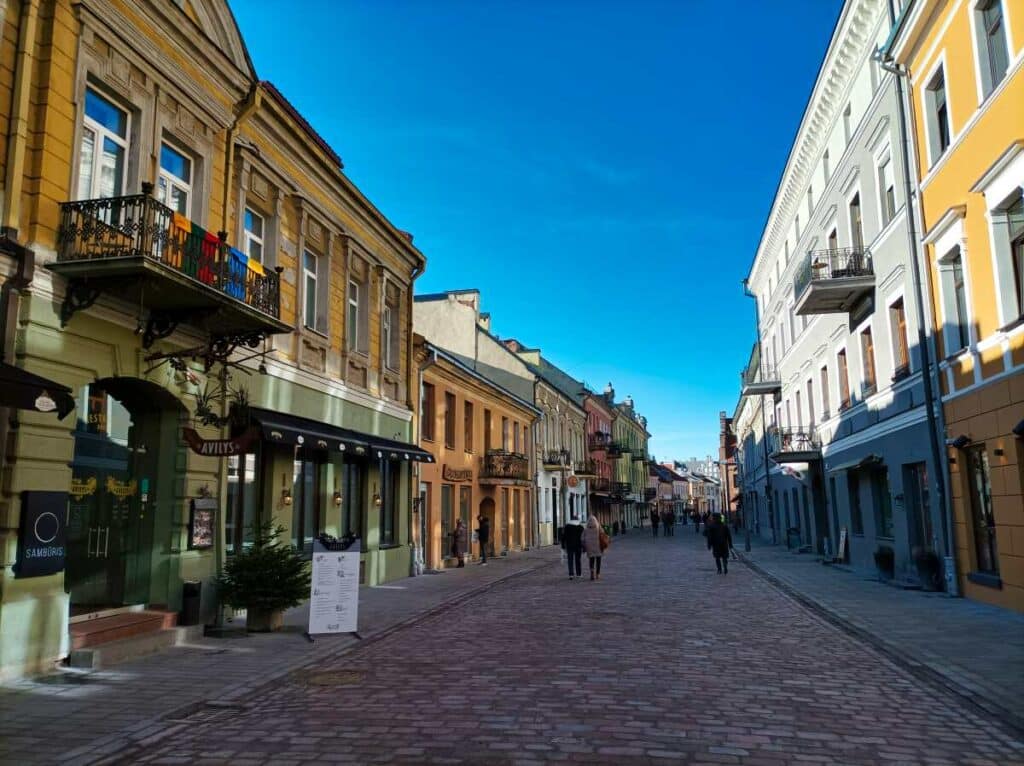
Kaunas
Tranquil Kaunas, the country’s second largest city after Vilnius, has been in the media time and again recently. After all, Kaunas was the European Capital of Culture in 2022, and parts of the city were also declared a UNESCO World Heritage Site in 2023! Kaunas was also once the Lithuanian capital and you can feel the splendor of years gone by on every corner here. The center looks almost monumental, while other places are dominated by secluded alleyways.
Many buildings of the so-called Lithuanian Modernism make the city absolutely unique and a Mecca for architecture fans. There is also a castle complex to visit, as well as exciting exhibitions such as the Žmuidzinavičius Museum, where you can find over 3000 depictions of the devil! You should plan two days for a visit to the city.
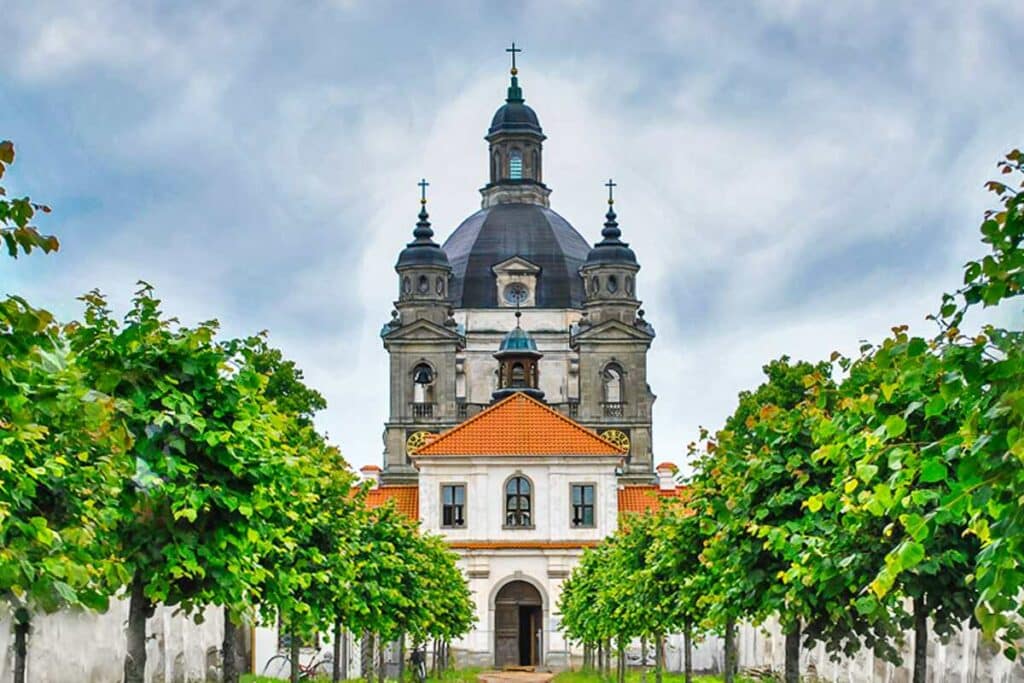
Pažaislis Monastery
You can combine a visit to Kaunas with a visit to Pažaislis Monastery, one of Lithuania’s most important sacred sights. The monastery complex is located just a few kilometers from the city and was built in the 17th century. The baroque church is one of the most beautiful that Lithuania has to offer. The image of the Virgin Mary with child is venerated here and is considered miraculous. But you can also experience some away from the church.
The complex is embedded in a beautiful lake and forest landscape that invites you to take long walks. The monastery is also home to the Monte Pacis restaurant, which is attached to a hotel and is considered one of the best in Lithuania and is ideal if you want to try the delicacies of Lithuanian cuisine.
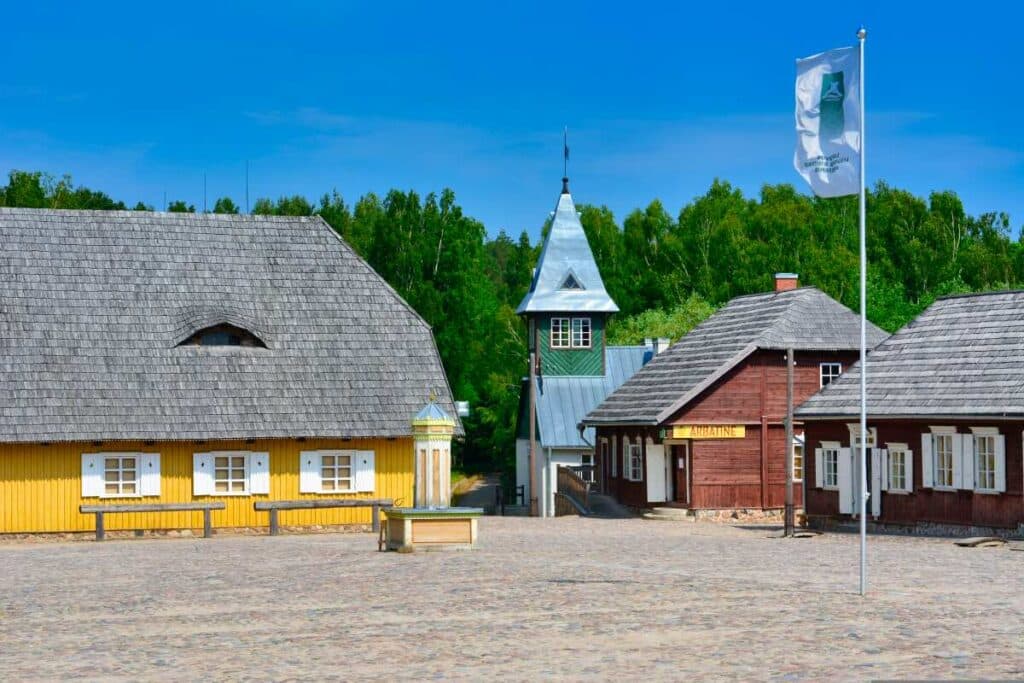
Rumšiškės Open-Air Museum
There are open-air museums in many countries, but the one in Rumšiškės, east of Kaunas, plays a special role. It has been in existence for almost 60 years and is one of the largest in Europe with almost 90,000 (!) exhibits. Covering an area of around 200 hectares, you will find countless wooden buildings here, as well as a typical Lithuanian town.
Many of the buildings can be entered, giving you a comprehensive insight into life in Lithuania in the past. There are also numerous hands-on stations. If you are in Lithuania in summer, you should definitely plan a visit at the beginning of August, when the Granatos Live music festival takes place.
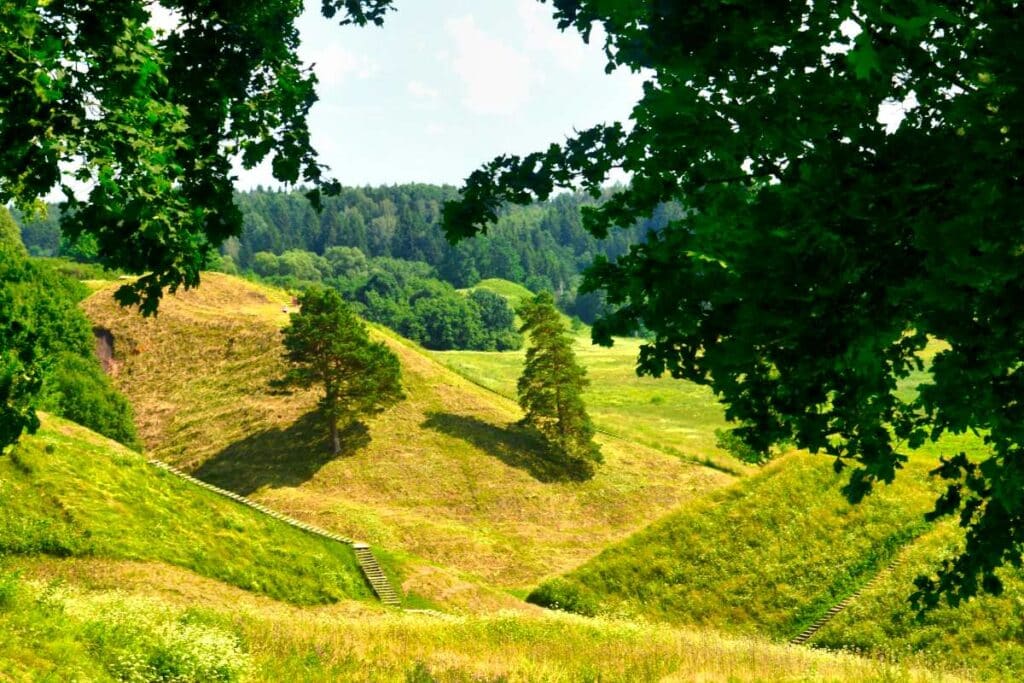
Kernavė
For such a small country, Lithuania had quite a few capitals. Kernavė, which today only has around 300 inhabitants, is also one of them. In fact, it is the oldest capital city in Lithuania. There used to be numerous castles here, of which only the mounds have survived.
The highest of them is said to have once been the seat of the legendary King Mindaugas, and the other hills were also of great importance to the Lithuanians, who were pagan until the late Middle Ages. The gentle hilly landscape of Kernavė was declared a UNESCO World Heritage Site in 2004 and is ideal for long walks, especially in summer when the landscape is lush and green.
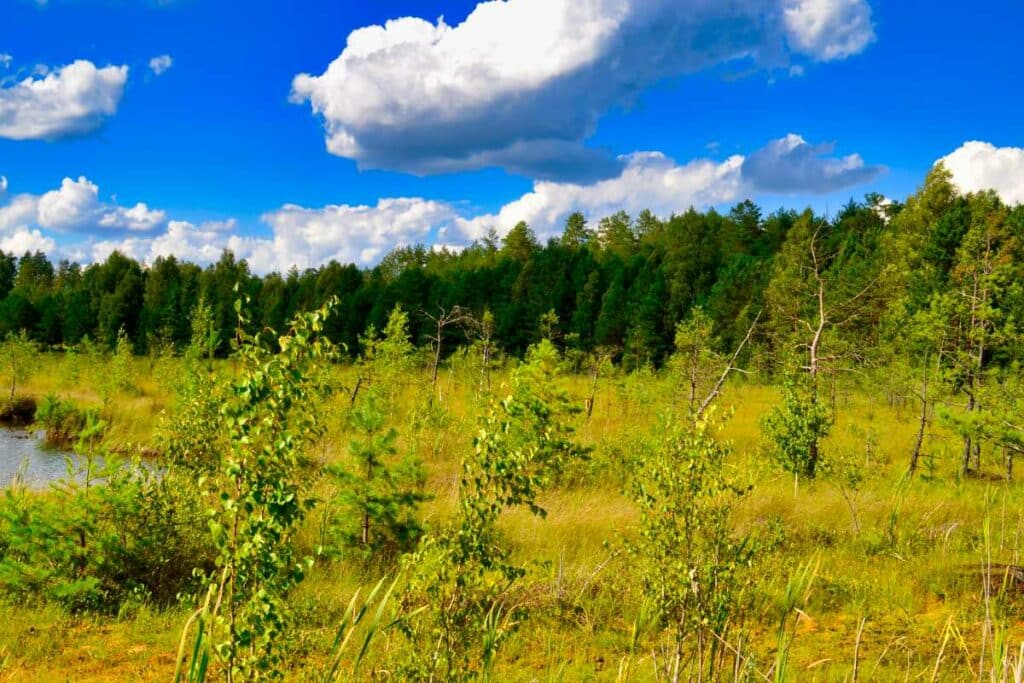
Dzūkija National Park
Dzūkija in south-eastern Lithuania is one of the country’s five historical regions. However, the national park of the same name is significantly smaller than the cultural landscape around Vilnius and Alytus and yet, with an area of just under 60,000 hectares, it is the largest in the country.
The national park is one of the most beautiful sights in Lithuania and, of course, especially for nature lovers. Here you can hike through the Čepkelių raistas moorland, which covers a good sixth of the national park’s total area.
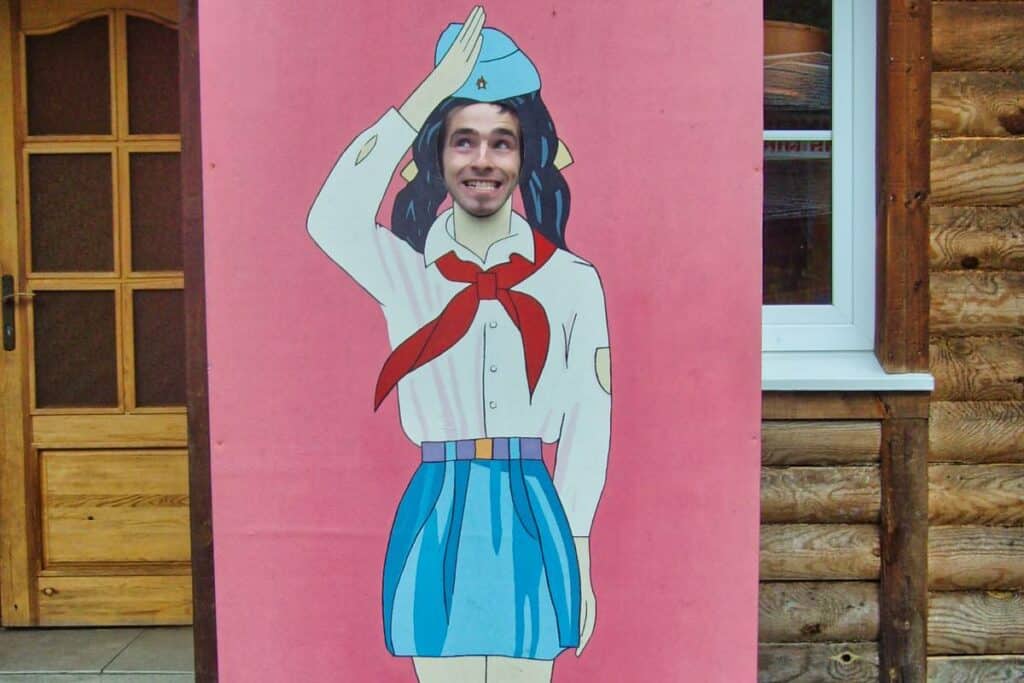
Grūtas Park
This place on our list of the top 20 Lithuania sights is a relatively strange one. In Grūtas Park you can travel back in time to the Soviet Union, because in “Stalin’s World”, as the park is also known, pretty much everything that was no longer used after the collapse of the Soviet Union and Lithuanian independence was collected. So if you want to take a selfie with Stalin or Lenin (in statue form), then you’ve come to the right place.
Center of Europe
Admittedly, there really are many places in Europe that claim to be the center of the continent. And since Europe geographically speaking can be seen in many different ways, the center is sometimes in Germany, sometimes in Belarus and sometimes in Ukraine. However, the village of Purnuškės to the north of Vilnius can claim that the renowned French “Institut géographique national” has declared it the center of the continent. Over the years, a mighty pillar with a wind rose has been built here and the Europos Parkas sculpture park is located nearby, which may not make this place one of the most beautiful Lithuania sights, but it is indeed a much-visited and unusual one.
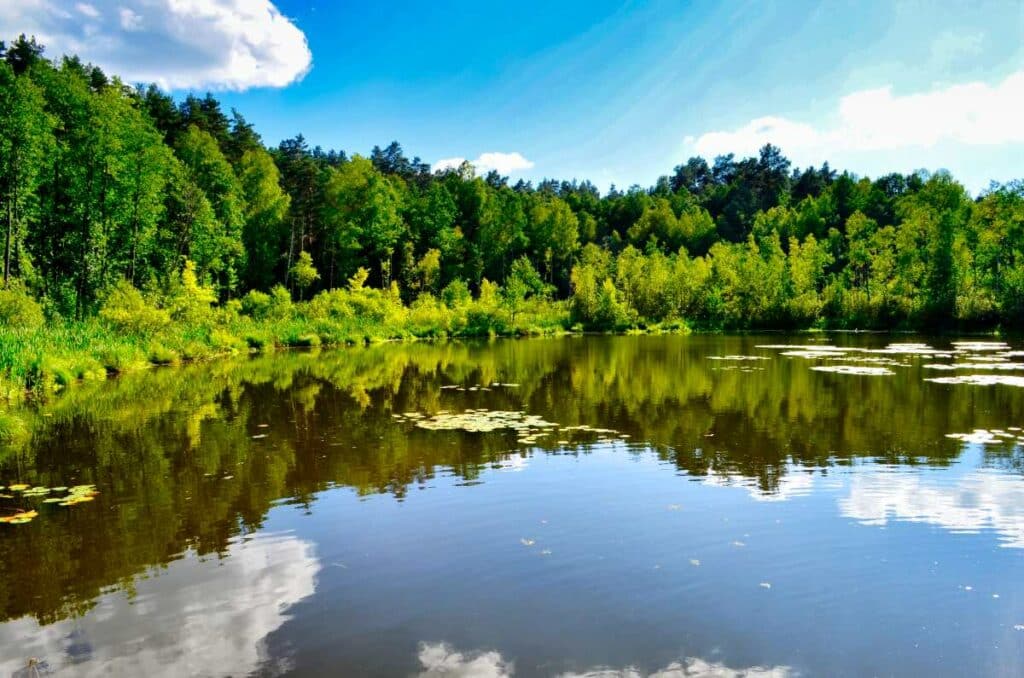
Druskininkai
In the far south of the country, in the border triangle with Poland and Belarus, lies the town of Druskininkai, which has a population of just under 15,000. Nestled in a charming forest and hilly landscape on the River Nemunas, Druskininkai is now one of the country’s most popular health resorts. Mud and climate cures take place here all year round, and there are also twelve mineral water springs. In addition to the sanatoriums, however, people are mainly drawn to Druskininkai for the peace and relaxation it promises.
Anykščiai
Anykščiai is also surrounded by numerous lakes. As numerous writers have worked in this town in the north of the country, Anykščiai is also known as the “Lithuanian Weimar”. You can follow in the footsteps of important Lithuanian writers on a literary trail here. In Antanas Baranauskas’ “Grain Barn”, you can experience how the great poet was inspired to write his hymn “Anykščiai Woods”. The railroad museum in the narrow-gauge railroad station is also worth a visit. The countryside surrounding the town also offers countless opportunities for outdoor activities such as hiking, cycling, canoeing and fishing.
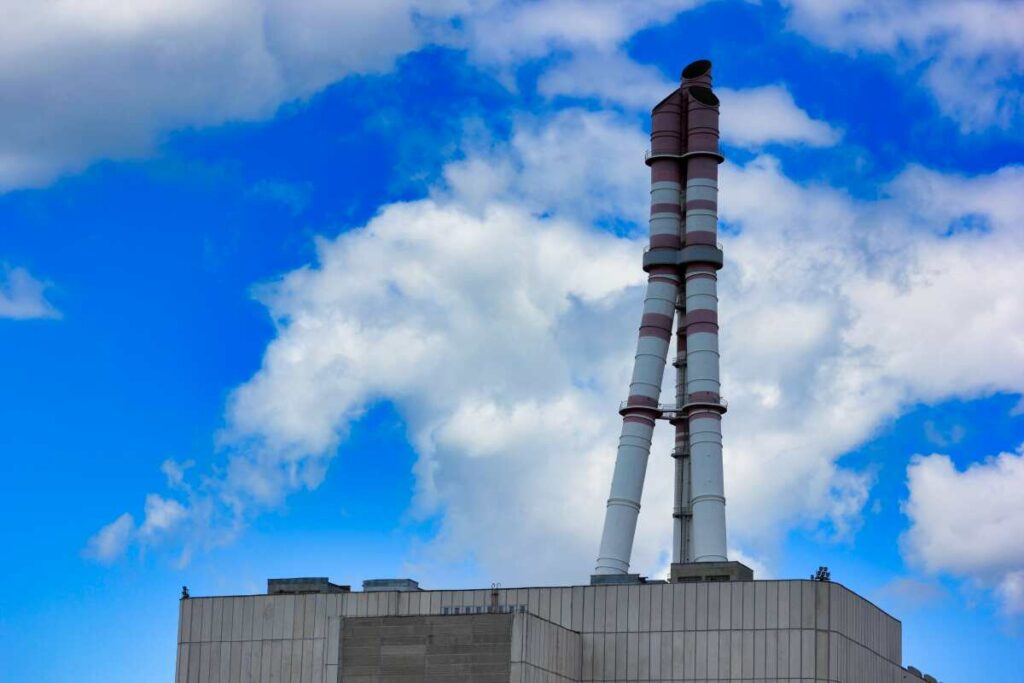
Ignalina nuclear power plant
A nuclear power plant as a tourist attraction? Exactly! The Ignalina nuclear power plant in the Lithuanian-Latvian-Belarusian border region is identical in construction to the Chernobyl plant. Here you have the chance to visit a power plant that looks exactly like the one in Chernobyl did before the devastating reactor disaster. Everything looks completely out of date, which makes it all the more remarkable that the power station was only decommissioned in 2009.
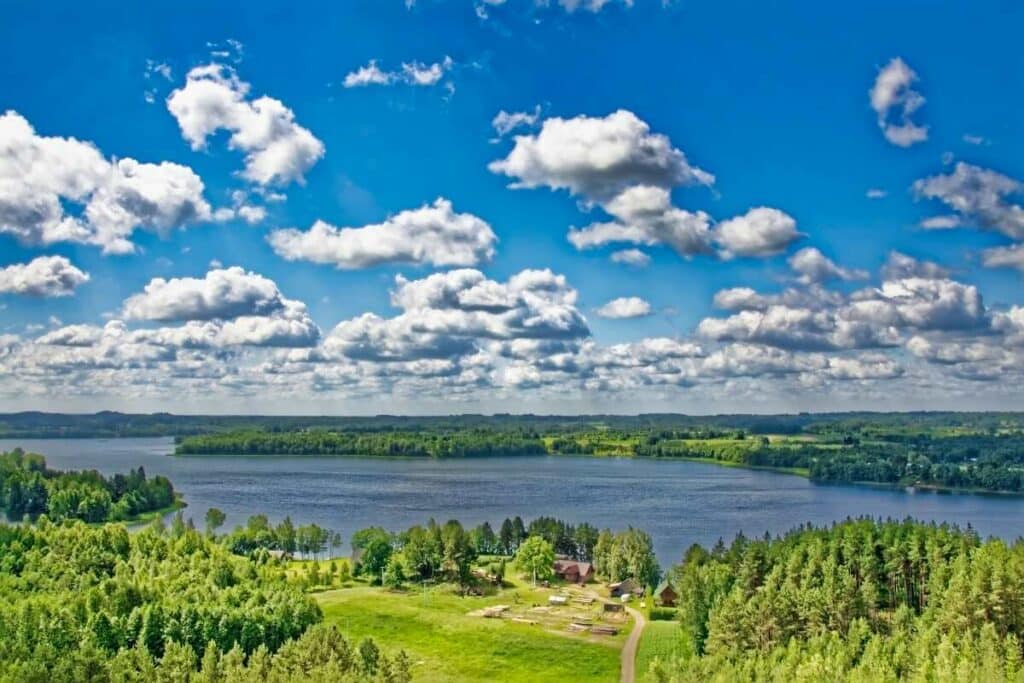
Aukštaitija National Park
Not far from Ignalina lays the Aukštaitija National Park, another important Lithuanian national park. With an area of “only” 405 km², it is significantly smaller than the Dzūkija National Park, but in terms of beauty it is in no way inferior. You will find over 80 large lakes here, as well as numerous streams and, of course, countless forests. But it’s not just nature lovers who get their money’s worth here, as numerous historic mills, wooden churches and the remains of ancient burial mounds have also been preserved in Aukštaitija.
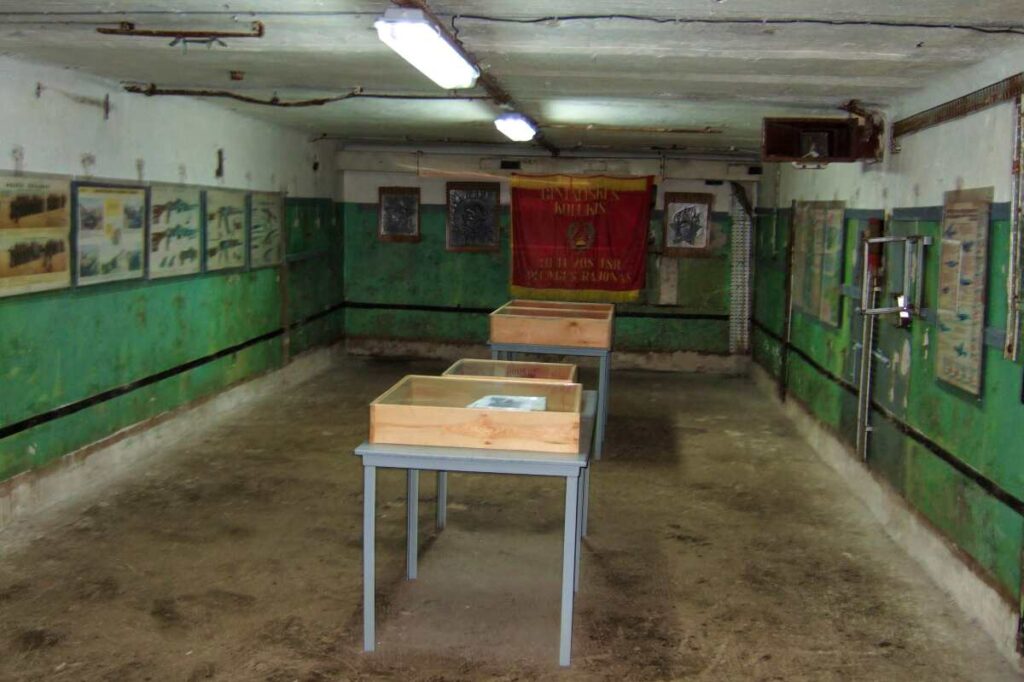
Plokštinė missile base
In the northwest of the country, next to Ignalina, there is another of the Lithuania sights from the Soviet era. The Plokštinė missile base was built in the 1960s and served as a base for several R-12 medium-range missiles, making it the first underground facility of its kind in the Soviet Union. After it became known in the late 1970s that American intelligence services had identified the location of the missile base, it was decommissioned. Today, it houses a museum that commemorates the Cold War era. What better place could you have chosen for this?
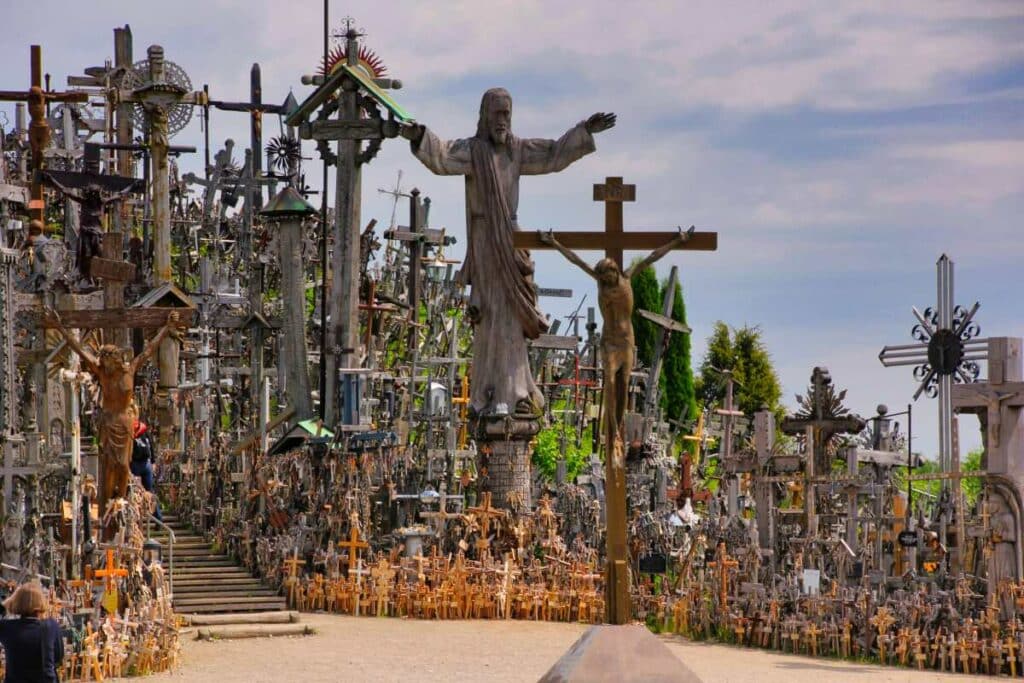
Mountain of crosses
The sights in Lithuania so far are nothing compared to Kryžių kalnas, the mountain of crosses in the north of the country. Climbing the hill is something very special. Catholic Lithuanians often visit the mountain to mark special events such as a wedding or the birth of their first child and erect a cross here in thanksgiving.
Numerous legends surround the mountain, the first crosses were erected here after an uprising by Poles and Lithuanians against Tsarist Russia in the middle of the 19th century, under whose control they were at the time. In the 1990s, students from Vilnius tried to count the crosses, but gave up at around 50,000. There are probably many times more today …
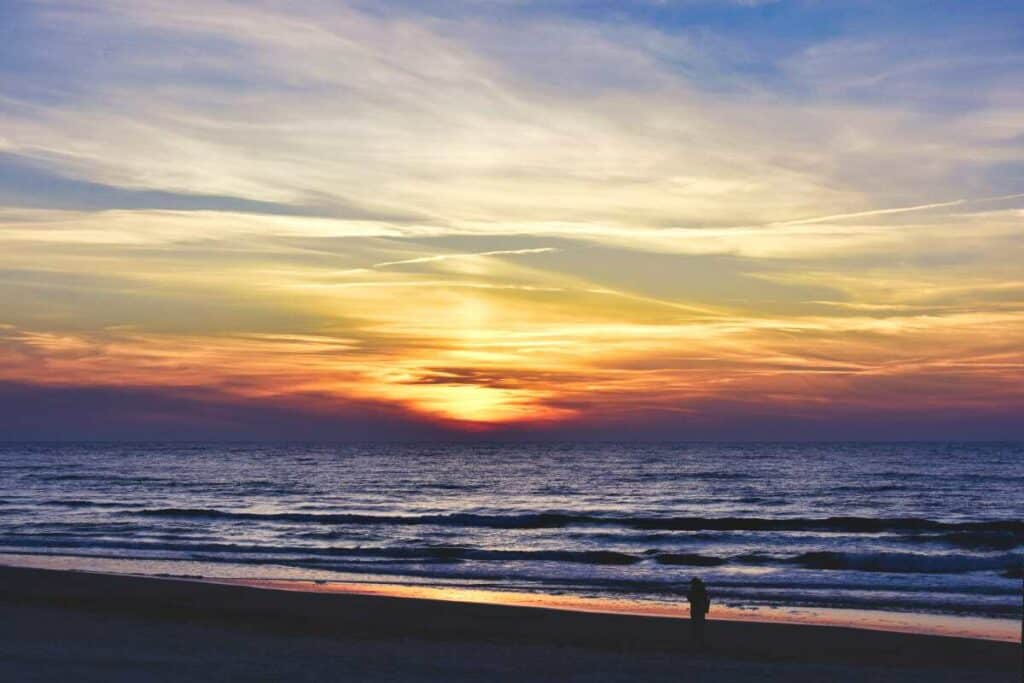
Curonian Spit
When you think of Lithuania and nature, the first thing that inevitably comes to mind is the Curonian Spit. About half of the narrow strip of sand lies on Lithuanian territory, the other half on Russian territory (Kaliningrad Oblast) and separates the Curonian Lagoon from the Baltic Sea.
In addition to its beautiful nature, the Curonian Spit is also known for the fact that Thomas Mann worked here in Nida (Nidden) between 1929 and 1932. His old summer house is now home to the Thomas Mann Cultural Center. Klaipėda, the most important Lithuanian port city, is located in the very north of the spit.

Nida sand dunes
However, Nida is not only famous for nobel-prize winning Thomas Mann, but above all for its unique dune landscape. These tower far into the sky, with the Parnidis dune being the most famous of them. With a height of 60 meters, it is the highest shifting dune in Europe after the Dune du Pilat in France. Nida is also the ideal place to explore the unique natural landscape, as there are numerous hotels and campsites here.
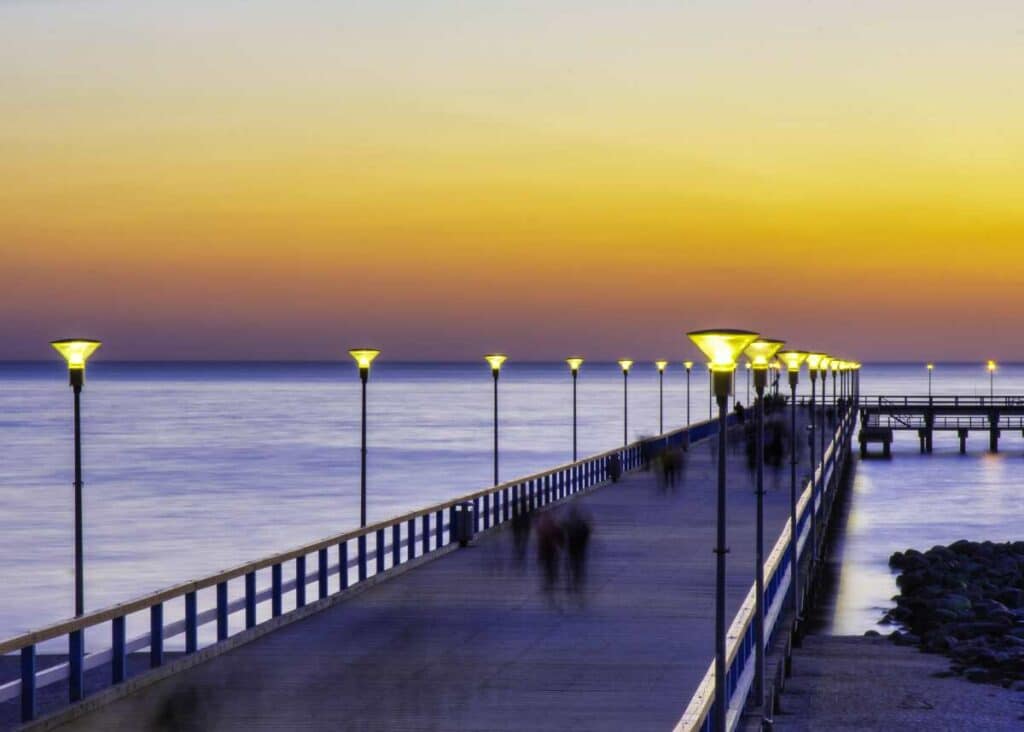
Palanga
We stay on the Baltic Sea, but now we head a little further north. Palanga is the country’s most popular seaside resort and is just a stone’s throw from the Latvian border. Fun fact: Before the First World War, the district of Nimmersatt (Nemirseta) was the northernmost point of the German Empire, as the Russian-German border ran right here. Today, the seaside resort is primarily known for its pier, but also for its amber museum in Palais Tyszkiewicz and its beautiful botanical garden.
Lithuania Sightseeing Book tips
Do you fancy a trip to the Baltic States and want to see the many Lithuanian sights live? Then this book from Reise Know-How Verlag is just the thing for you.
No products found.
We have already introduced you to Lithuanian cuisine in a separate article. dagG
No products found.
If you don’t want to visit the whole country, but just Vilnius and Kaunas, then take a look at this practical city guide, which also describes a trip to Trakai.
No products found.
How did you like our article about the sights in Lithuania? What is your favorite place in Lithuania? Let us know and write us a comment!


